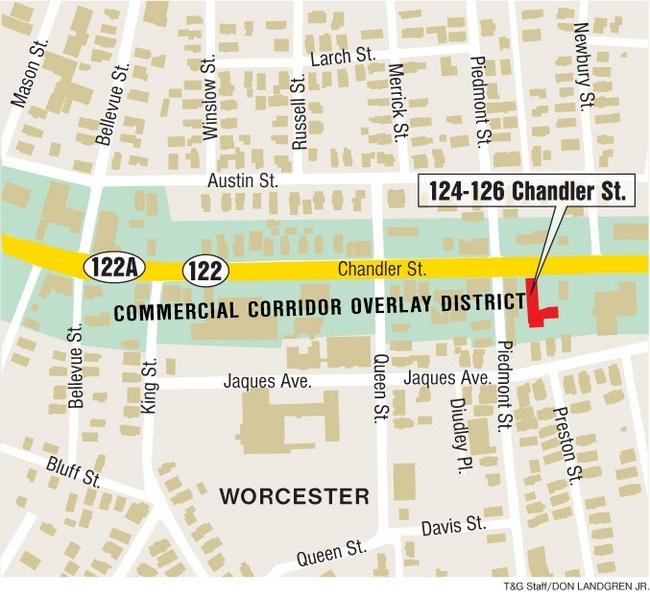From the City of Worcester website:
On February 3, 2015, the City Council adopted a Commercial Corridors Overlay District (CCOD) zoning ordinance and map amendments. The intent of the ordinance is to:
- Promote both redevelopment of existing buildings and new development of consistent and compatible character;
- Encourage a mix of complementary uses;
- Foster the development of high-quality, pedestrian-scale environments through site and building design;
- Reduce the amount of land devoted to parking and utilize parking areas more efficiently;
- Preserve and enhance the historical, cultural and architectural assets of the City.
The CCOD encompasses the downtown area and connecting major commercial corridors of the City, including Main, Chandler, Pleasant, Highland, Shrewsbury and Grafton Streets. It also includes the Quinsigamond Village area. An Overlay District is a special zoning district that is superimposed on top of the underlying conventional zoning districts. This planning tool allows application of a distinct set of additional development regulations that supplement or supersede the underlying zoning in order to address specific purposes.
Now look at the ordinance itself, here is a key parapgraph
The overall intent of the Commercial Corridors Overlay District is to encourage compact, pedestrian friendly development that is physically and functionally integrated through site design,dimensional and parking standards that limit parking, provide flexibility for development initiatives and provide incentives for mixed-use development. Specifically, the purposes and objectives of the Commercial Corridors Overlay District are:
1. Automobile Refueling Station; Auto/Truck body or paint shop; Motor vehicle service, repair, garage, display;
2) Motor vehicle/trailer/boat sales.
3) Single-family detached dwelling; Two-family detached dwelling.
Uses involving drive-through service, subject to additional restrictions detailed in item (C) below.
The Chandler Street Business Association worked hard with the City of Worcester Economic Development Office to have Chandler Street as an overlay and have several meetings over two year inviting all the stakeholders and City Councilors. As evidenced by the fact, Chandler Street was included, their hard work paid off. This year an existing business, which is grandfathered in their current location, tried to move their business to another property that was not grandfathered, thus not allowed in Commercial Corridor. The owner tried to have the address (124-126 Chandler) removed from the property from the Corridor so he could move his business. The Chandler Street Business Association opposed this request and the City Council agreed.
Worcester council denies zoning break for Chandler Street tire business https://t.co/XF3Y0lpVKq@NCKotsopoulos
— Telegram & Gazette (@telegramdotcom) April 13, 2016
Now many people have taken the position that the Council and the Chandler Street Business Association, were wrong. Here are our three reasons why the Chandler Street Business Association and the Council got it right:
- The Corridor has been in existence since February of 2015, the owner and his legal representatives should have done the due diligence to make sure this new property was zoned for the proposed use before they brought the property. If we made zoning changes based on this, then anyone could put anything anywhere then go to the City Council and say “we just invested monies into this property, make the zoning change”.
- The Chandler Business Association and the City Economic Development office worked for at least two years on this Corridor and had several meetings with all the stakeholders. To allow this zoning change would pay not regards to all the work that had been done here or for that matter in the other approved Corridors.
- What precedence does this lead to when another property wants to put an excluded business into any of the Corridors?
This whole situation should have been avoided. Look no further then the recent sale of the Main South Post. The property went under agreement, but they could not close until a zone change was completed. They did not buy the property then look for a zone change? Kudos to the Council for appreciating the hard work that has been invested in establishing these corridors! Zoning ordinance are there for a reason and buyers should do their due diligence before buying a property.
Worcester council OK’s zoning change for former Main South Legion post https://t.co/lGj1IxbwCk @NCKotsopoulos pic.twitter.com/CJpM8GKA1t
— T&G Graphics (@T_G_Graphics) March 9, 2016

